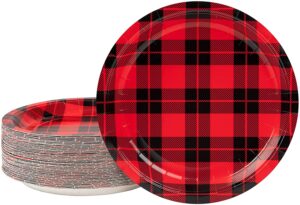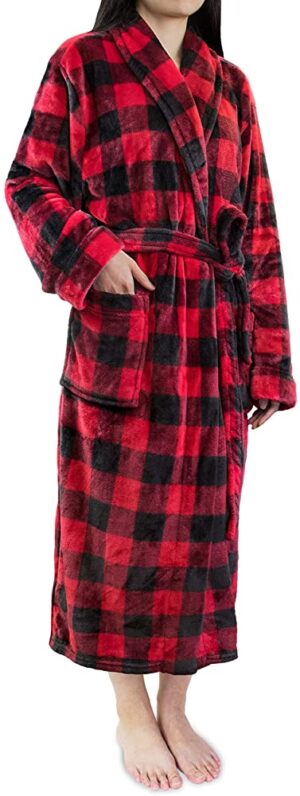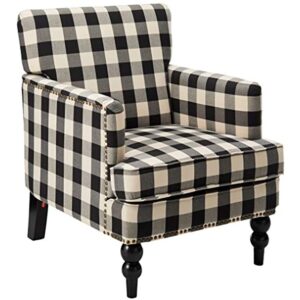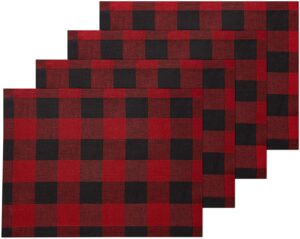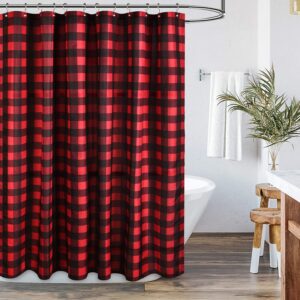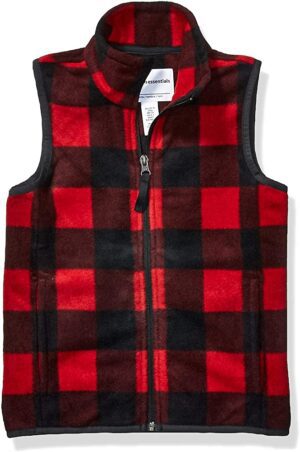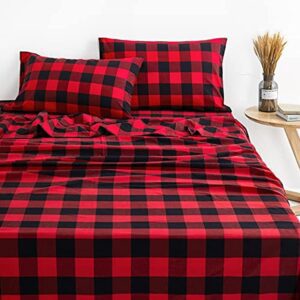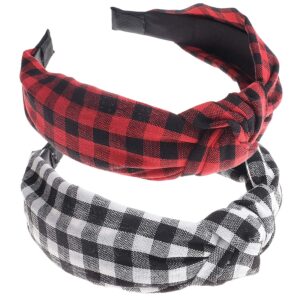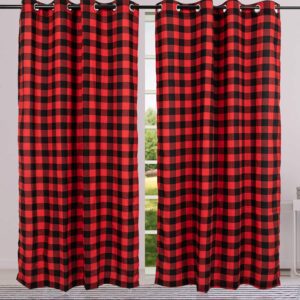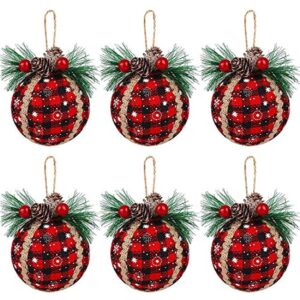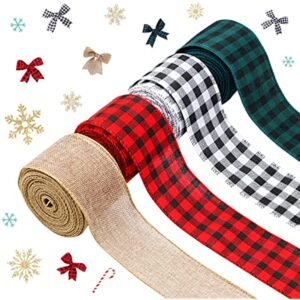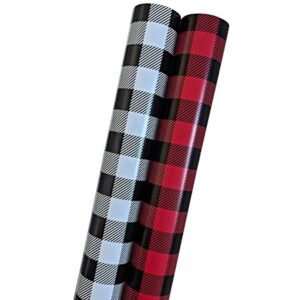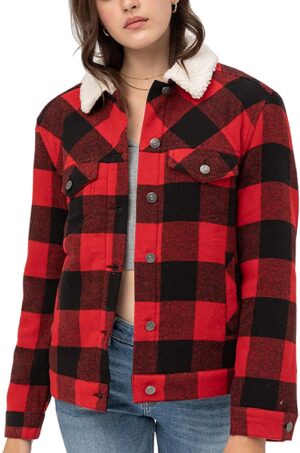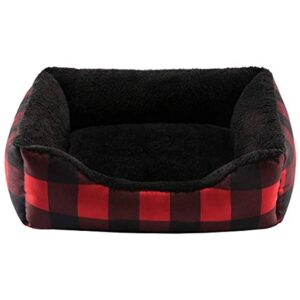Necessary considerations before designing a Nursery
To ensure a smooth and well-prepared nursery design process, you need to take careful considerations before diving in. Budget, space, and safety precautions are three essential elements to keep in mind to avoid any potential mishaps or regrettable design decisions. Let’s take a closer look at these necessary considerations before beginning your nursery design with peace of mind. If you need some inspiration to kickstart your design process, feel free to Dive into Our Plaid Nursery Ideas.

Budget
When creating a nursery, budget is a major factor to consider. Planning it is key – it’ll decide the quality and cost of items bought. Here are 6 points to keep in mind:
- Think about all the items needed, e.g. furniture, bedding, and storage.
- Research online for the best deals.
- Prioritize essential items.
- Note down finances allocated for each item and track spending.
- Have extra money for unexpected costs.
- Consider buying second-hand or donations from family/friends.
Adhering to these points will help create a nursery that is financially feasible. It’s important not to compromise on essentials such as safety and comfort.
Space
Maximizing Room Space in Nursery Design
Optimizing room space is key when designing a nursery. This will make the room look more spacious and airy. Opt for furniture that can be stored vertically or flat against the wall. Install ceiling lights to save floor space. Wall hooks and sling organizers are great for small items.
Choose furniture that is the right size for the nursery. Know the dimensions before buying things like curtains, rugs, bins, and closets.
Combine multifunctional items when possible. For example, a dresser with an attached changer top gets rid of the need for a separate changing table.
Be mindful of details that promote safety and organization. Research designs and storage options to make the nursery functional and free from clutter.
Safety precautions
Creating a nursery for your little one? Make sure it’s safe! Here are 4 must-do safety measures:
- Install baby gates or door locks to stop them from entering certain areas.
- Secure furniture, such as dressers, bookshelves, and cribs, so they don’t tip over.
- Don’t use blankets or pillows in the crib – sleep sacks are better to avoid suffocation.
- Cover all electrical outlets with protective covers to prevent shocks or burns.
Also, consider potential risks – such as sharp edges on furniture or hanging cords from window blinds.
Remember, keeping your child safe is key to their health and growth. When it comes to safety, it’s best to be extra careful.
How to Design the Perfect Nursery: Color Schemes
To choose the perfect color scheme and theme for your baby’s nursery, you need to keep in mind factors like gender neutrality, personalization, textures, and patterns. Each of these elements plays an essential role in designing a nurturing and visually appealing space for your little one. If you’re considering a cozy, timeless theme, Create a Cozy Plaid Nursery with our exclusive Buffalo Plaid Nursery collection.
Gender neutrality
Colors and themes of designs are essential for their success. Consider the audience and the design goal when making choices. Gender inclusivity is becoming popular, as not all identity with traditional gender roles. This means avoiding colors and themes that are linked to a certain gender.
For gender-neutral designs, opt for green, yellow, or orange instead of pink or blue. Avoid patterns that are feminine or masculine, and use abstract designs instead. Also, research cultural differences when creating a global design. Represent diversity in sexuality and gender identity to further promote inclusivity.
In conclusion, go beyond aesthetics when choosing colors and themes. Inclusivity will make a design successful.
Personalization
Customization of the webpage is key for a unique identity. Make changes to the layout, and select color schemes and themes according to objectives. Think about the target market’s taste when personalizing.
Design should reflect core values, create the right emotions and give a great experience. Add interactive elements like photos, videos, and animations. Plus, a logo can enhance brand recognition and recall.
Personality must add value to content. Line up with the brand identity. Typography should be consistent and easy to read.
The aim is to get maximum benefits without compromising user experience and aesthetics. Understand audience needs and fulfill business goals. Keep trying different designs until you reach the desired outcome.
Textures and patterns
When it comes to designing surfaces, a mix of shapes, colors, and shades creates a visual texture that appeals to our senses. The balance between textures and patterns is also important for an attractive space.
- Make sure digital images or patterns look clear on larger screens.
- Keep it simple and symmetrical for website navigation.
- Combine textures and patterns subtly, with a unified color scheme.
- Place textures strategically to cover distracting sections.
- Don’t overdo abstract patterns since they may look cluttered.
- Choose plainer backgrounds for greater focus on content.
Textures should fit in with surrounding elements like fonts, icons, graphics, etc. Adding gradients or monochromatic hues with organic shapes like leaves and flowers would make visuals appear softer.
Picking the right textures for your website design can make a huge difference. Get creative and you may get great results that attract customers to your products or services.
Essential furniture for a baby’s nursery
To design the perfect nursery for your baby, you need to know what essential furniture your baby requires. In order to provide you with solutions, let’s dive into the most important furniture for your baby’s room – the crib and bedding, a rocking chair or glider, and a dresser and changing table.
Crib and bedding
Designing a nursery for your baby? Prioritize a crib and bedding for a suitable sleep area. Six points to consider when selecting:
- Sturdy, safe crib.
- Snug fitted sheets or mattress protectors.
- Invest in quality infant mattresses.
- Avoid loose bedding like bumper pads, pillows, or blankets.
- Choose breathable fabrics for blankets, swaddles, or sleep sacks. Avoid excessive layers.
- Clean bedding regularly.
Keep individual needs and preferences in mind. Co-sleeping options like bassinets or in-bed cots? Mini-cribs? Research multiple options. Ensure a safe and comfortable sleep environment for your child!
Rocking chair or glider
A comfy spot to rock your baby to sleep is a must-have in any nursery. Think about getting a Rocking chair or glider. It’s the perfect mix of style and practicality.
Its back-and-forth movement will help lull your infant to sleep. Be sure to find a chair with armrests at the right height for feeding and burping. Choose fabrics that are easy to clean – accidents happen! Don’t forget your own comfort – look for chairs with good cushioning and support.
When it comes to furnishing a nursery, each item should have a purpose. A crib is a must for safe sleeping. A changing table is great for diaper changes. A dresser keeps clothes and linens organized. But beyond the basics, a Rocking chair or glider helps create a warm, inviting space for bonding with your little one.
Dresser and changing table
A baby’s nursery needs a multi-purpose unit. It combines storage with a changing table top. Configurations vary to fit the space and personal preferences. It comes in the form of a dresser with a removable changing table top.
Parents can maximize space. They can find a wide range of sizes, shapes, colors, and finishes. Popular features include drawers and shelves. There are also safety rails on the changing table section.
When selecting this item, consider practical details. Think about the storage needs and flooring surfaces. Check if the wheels are compatible. Ensure safety standards are met. For example, check if it meets ASTM International or Consumer Product Safety Commission guidelines.
In conclusion, the dresser/changing table is an essential piece of furniture. It offers both practicality and style. It provides storage for clothes, diapers, burp cloths, etc. And it saves valuable floor space.
Lighting and accessories
To create the perfect ambiance in your nursery, lighting, and accessories play a vital role. With the right selection of lighting fixtures and accessories, you can ensure your baby’s comfort and create a soothing environment. In order to achieve this, in this section on lighting and accessories, we will discuss various solutions, including a dimmer switch, window treatments, wall décor, and storage solutions.
Dimmer switch
The adjustable illumination mechanism, known as a light level regulator, alters the luminance of lighting equipment. It is vital for obtaining an even lighting and setting the atmosphere. The dimmer switch helps control the brightness and practicality of lights in homes, offices, and hotels. Using the dimmer switch maintains energy conservation while providing the right amounts of light at different times. This offers customization that regular electrical tools don’t provide.
Plus, dimmer switches save energy by decreasing the power used for lighting, which reduces electricity bills. They also make a pleasant atmosphere in any room by allowing users to modify brightness levels in lighting devices more easily. Certain models come with extra functions like integrated timers or wireless connections that give remote access through mobile apps or voice assistants. Electronic dimmers reduce voltage changes in your electrical infrastructure, decreasing wear-and-tear during on/off cycles of usual wall switches. Fitting a dimming device requires professional electrician installation, guaranteeing exceptional performance and complying with electrical connection safety rules.
Window treatments
Natural language processing helps us understand the ins and outs of house decorating. Enhancing window appeal is one of them. Here are 5 tips to achieve that:
- Choose window treatments that match the interior design.
- Pick materials, patterns, and colors that contrast or complement wall paint and furnishings.
- Be creative with curtains or drapes, like floor-to-ceiling or a mix with Roman shades.
- Have proper lighting for privacy and protection against UV rays without blocking natural light.
- Accessorize stylishly with valances, tiebacks, and rods.
Remember, window treatments also have a big role in regulating temperature and creating a comfortable atmosphere. Combine style and functionality to get an attractive and practical living space.
Wall décor and storage solutions
Are you trying to make your walls more interesting and practical? There are lots of options to choose from! Think about:
- Shelving units for decoration or storage.
- Hanging baskets and wire grids for plants or collectibles.
- Wall-mounted cabinets with shelves and doors for storage.
- Pegboards for tools, craft supplies, or jewelry.
- Vintage crates that can be hung for a unique look and storage.
For extra visual appeal, use wallpaper or decals. You can also make a gallery wall with art or photos. This way, your walls will be stylish and organized!
Creating a stimulating environment
To create a stimulating environment for your baby, designing the perfect nursery is crucial. For this, you can use toys and books, music and sounds, and mobile or wall art to enhance the visual and auditory experience of your little one. These sub-sections will help you in creating a beautiful and engaging space for your baby. For further guidance and ideas, do not hesitate to Visit Our Site.
Toys and books
Toys and literature materials are essential for creating a stimulating atmosphere for kids’ growth. Pick suitable toys and educational books for the child’s developmental and educational needs.
- Present assorted toys, like puzzles, building blocks, etc., to improve cognitive development.
- Include expressive playthings like musical instruments, art supplies, and props to foster imaginative and creative play.
- Suit the kid’s interests with toys related to their natural curiosity or hobbies – such as science kits or crafting sets.
- Introduce age-appropriate literature materials that match the child’s intellectual level. Picture books with engaging illustrations suit younger children while more challenging stories can be provided for older ones.
- Increase the variety of reading materials from fiction literature which can stimulate imagination and storytelling skills, to non-fiction titles that promote learning about particular interests.
Also, it is vital to keep such possessions clean and arranged neatly. Not doing so could result in chaotic spaces, which can trigger anxiety and disorganization in the kids.
Music and sounds
The use of sound is an effective way to make an exciting atmosphere. Music and sounds, such as calming nature or upbeat music, can bring emotional advantages. Research shows the correct background noise can help with creativity and focus. Thanks to technology, white noise machines, and ambient sound playlists are easily accessible for making the perfect audio ambiance.
Mobile or wall art
Aesthetic decorations can make a room come alive! Here are 3 ways wall art and mobiles can do this:
- Wall art in specific places can create a look with extra texture and depth.
- Mobiles add movement and excitement to a space that may otherwise look dull.
- You can choose pieces that reflect your feelings and interests.
When selecting wall art or mobiles, pick colors, shapes, and sizes wisely. This will make the room look even better. A well-done room can make you feel better, so picking beautiful pieces is important.
Maintenance and cleanliness
To ensure that your baby’s nursery remains a safe and hygienic space, it is essential to prioritize maintenance and cleanliness in your design plan. With easily cleanable surfaces, storage, and organization solutions and knowledge of common cleaning products to avoid, you can keep your baby’s nursery in top shape. Let’s explore how these sub-sections can help you achieve the ultimate nursery maintenance and cleanliness.
Easily cleanable surfaces
Easy-to-clean and maintain surfaces are vital for hygiene and safety. They allow quick and cost-effective cleaning, reducing the chance of contamination. Three important features of these surfaces are: non-porous, chemical-resistant, and no cracks or crevices where dirt can reside. Having this type of surface in high-traffic places like hospitals, schools, and food factories keeps maximum cleanliness with minimum disruption. Proper use of cleaning agents and an effective cleaning plan helps keep these surfaces in good condition. Without regular maintenance, they won’t be able to prevent microbial growth which can be dangerous.
Regular inspections to detect any damages, chips, or worn-out areas are important to ensure easy maintenance of surfaces. Damaged surfaces can easily contain bacteria, requiring more expensive repair procedures. It is essential to find the right balance between function and beauty when choosing these surfaces, considering factors like durability and sustainability. By focusing on easy-to-clean materials during purchase, as well as cleaning practices for daily upkeep, facilities remain in good condition without any impact on productivity or quality standards.
Storage and organization
Organizing and storing items correctly is vital for a well-functioning workspace. It allows easy access to important things and reduces the risk of cluttered places, slips, and cuts. To ensure a smooth-running workspace, here are some tips:
- Give each tool or item its own place.
- Label each item with a unique identifier for its location.
- Use bins and racks for items that can’t fit on shelves.
- Clean and reorganize containers regularly.
Make sure to set aside time daily to keep things in order. This will help you maintain a safe space and avoid any delays.
Common cleaning products to avoid
Cleaners in the home can be dangerous if misused or overused. Knowing which cleaning products to avoid is essential to prevent harm to yourself and your family.
- Bleach: Too much bleach or bad use can cause lung troubles, itchy skin, and burning eyes.
- Ammonia: Ammonia is strong and can cause skin rashes, breathing issues, and even burns with too much.
- Air fresheners: Synthetic scents and aerosol sprays in these can cause allergies and breathing difficulties.
- Oven cleaners: Sodium hydroxide in oven cleaners can hurt skin and eyes if not used right.
Be careful with cleaning products. Read labels and follow instructions. Wear gloves and make sure there’s good airflow in the room too. Taking care of cleaners keeps us safe.
Final touches
To complete the final touches of your perfect nursery design, you need to focus on safety checks, personalization, and preparing for the arrival of your baby. These aspects will ensure a welcoming, comfortable, and secure environment for your little one.
Safety checks
For maximum protection and to fend off any issues, an intensive review is a must prior to finalizing the task. The last step of the process is indispensable as it can have an effect on the entirety of the outcome, necessitating the need for proper safeguards. Examining equipment, surveying safety regulations, re-examining records, verifying a safe environment and looking for potential dangers are all essential.
Conducting safety checks is crucial for diminishing pricey mistakes and affirming everything is in order. It’s essential to analyze even inconspicuous facts and guarantee precise application to assure a top-notch outcome.
Personalization
Unique Tailoring.
Personalization is key to creating an immersive, memorable, and attractive experience for users. Companies can customize their services and products to fit the needs and preferences of their customers. Tailored customization helps to make businesses stand out from the competition, as well as maintain customer loyalty.
To understand customer behavior, companies must analyze data to spot trends and patterns. Furthermore, personalization goes beyond just using a customer’s name in an email. It means leveraging technology to deliver individualized content based on the user’s location, browsing history, and search queries.
For example, e-commerce sites use purchase history and machine learning algorithms to suggest items customers might like. This customized content encourages repeat purchases and bigger baskets.
Preparing for the baby’s arrival
To make a successful transition into parenthood, it’s essential to prepare ahead of time. This includes creating a sleeping space, getting equipment like strollers and carriers, and stocking up on baby supplies. It’s also important to have a support system in place.
Safety should be a top priority. Check your home for any potential hazards, such as sharp corners, hazardous substances, and breakable items.
Plan ahead for postpartum care and medical bills associated with childbirth – it’s better to be safe than sorry. Arrange help with household chores to avoid feeling overwhelmed.
Overall, a thorough preparation plan makes the transition smoother for both parents and their babies.
Frequently Asked Questions
Q: What colors should I use in my baby’s nursery?
A: Soft, calming colors such as pastels are recommended for a baby’s nursery, but ultimately it is up to personal preference. Just be sure to avoid bright, stimulating colors that might disrupt your baby’s sleep.
Q: How can I make the nursery safe for my baby?
A: Make sure to properly secure furniture to the wall, remove any loose cords or wires, and avoid cluttering the space with too many decorative objects. It’s also important to have a smoke detector and carbon monoxide detector installed in the room.
Q: What kind of lighting should I use in the nursery?
A: Soft, ambient lighting is recommended for a baby’s nursery. A dimmer switch can also be helpful for adjusting the lighting to match the baby’s sleep or wake schedule.
Q: When should I start designing my baby’s nursery?
A: It’s best to start designing the nursery early in the pregnancy, around the second trimester. This allows for plenty of time to plan, purchase furniture and decorations, and make any necessary adjustments before the baby arrives.
Q: What furniture do I need in the nursery?
A: The essential furniture items for a baby’s nursery are a crib, a changing table, and a dresser. Other optional items include a glider or rocker for feeding and soothing the baby, and a bookshelf or toy chest for storage.
Q: How can I personalize the nursery without spending too much money?
A: There are many cost-effective ways to personalize a nursery. You can create your own artwork and frame it, use removable wall decals instead of painting, or repurpose items from around your home for decoration.



